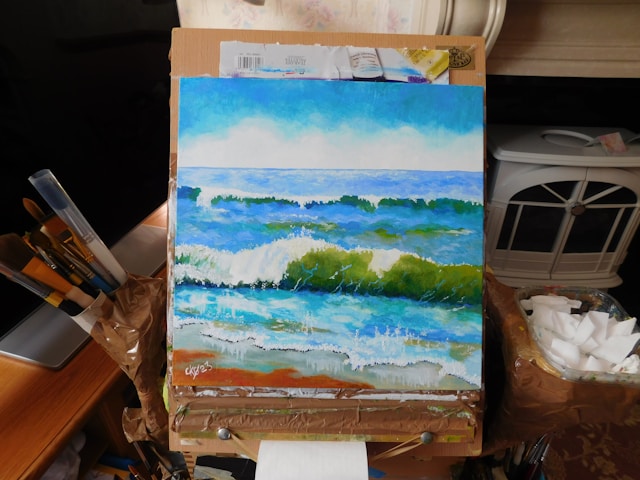
Creating Beautiful Compositions for Small Paintings
Small paintings, with their intimate charm and intricate details, have captivated artists and collectors alike for centuries. However, painting on a small scale comes with its own set of challenges, particularly when it comes to composition.
In this blog, we’ll explore the techniques and strategies for creating successful compositions for small paintings, along with an inspiring story of a famous artist who mastered the art of small.
1. Embrace the Power of Simplicity.
When working with limited space, simplicity is your best friend. Focus on creating compositions that are clear, concise, and uncluttered. Keep your subject matter minimal, and avoid overcrowding the canvas with unnecessary details. Remember, less is often more when it comes to small paintings.
2. Consider Scale and Proportion.
While working on a small scale, it’s important to pay attention to scale and proportion. Ensure that the elements within your composition are appropriately sized relative to the size of the canvas. Experiment with different arrangements and placements to achieve visual balance and harmony.
3. Use a Limited Color Palette.
Small paintings can benefit from a limited color palette, as it helps create cohesion and unity within the composition. Choose a few key colors that complement each other and stick to them throughout your painting. By keeping your palette simple, you can create a harmonious and visually pleasing composition.
4. Pay Attention to Depth and Perspective.
Despite their small size, petite paintings can still convey a sense of depth and perspective. Experiment with techniques such as overlapping, atmospheric perspective, and varying brushstrokes to create the illusion of space within your composition. By adding depth, you can enhance the visual interest and realism of your small paintings.
5. Tell a Story.
Small paintings have the unique ability to evoke emotion and tell a compelling story in a compact space. Consider the narrative or message you want to convey through your composition and incorporate elements that support your theme. Whether it’s a quiet still life or a bustling street scene, let your imagination guide you in crafting a captivating story within your painting.
An Inspiring Story:
One artist who exemplified mastery in painting small artwork was the renowned Dutch painter, Johannes Vermeer. Despite his relatively small body of work, Vermeer’s paintings are celebrated for their exquisite detail, luminous colors, and compelling compositions.
One of his works, “Girl with a Pearl Earring,” is famous for creating intimate and evocative portraits on a small scale. Vermeer’s ability to capture the essence of his subjects in small, meticulously crafted paintings continues to inspire artists and art lovers around the world.
Creating successful compositions for small paintings requires a thoughtful approach and attention to detail. Keep these tips in mind so you can bring your small paintings to life with beauty and impact. Pick up your brushes, unleash your creativity, and discover the magic of painting on a small scale.